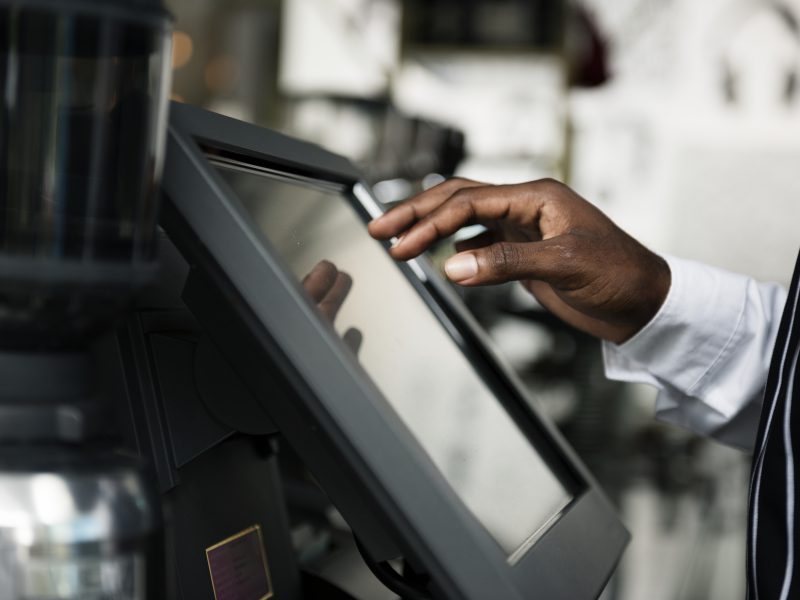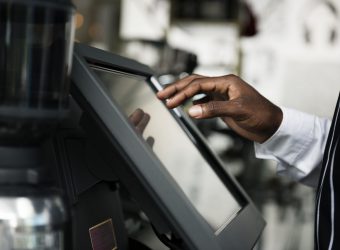Projects Category: Fintech
- Home
- Fintech

This project aimed to streamline and secure the process of dispensing MasterCard and American Express (Amex) cards through Nedbank’s self-service kiosks. The initiative was designed to enhance customer convenience, reduce the need for branch visits, and improve card accessibility.
Project Summary
| Role | Lead Designer |
| Client | Nedbank 🟢 Completed |
| Year | 2024 |
| Tools | Figma, Miro, Maze |
| Key Challenge | ⚠️ Initial rise in fraud cases due to unauthorized access |
| Solution | 💡 Implemented biometric authentication at the card dispensing stage to prevent fraudulent transactions. |
| Impact | ✅ 200,000+ cards dispensed monthly, just 6 months after launch |
| ✅ Significant fraud reduction after security enhancement | |
| ✅ Initial rise in fraud cases due to unauthorised access |
The Process
Business Need: Reducing Queues & Driving Self-Service Adoption
At Nedbank, long queues at the customer service desk were a persistent challenge, particularly for card collection. Customers visiting branches for new or replacement MasterCard and Amex cards led to high service desk congestion, longer wait times, and increased operational costs.
The business identified an opportunity to encourage self-service behaviour by enabling customers to dispense their cards directly from Self-Service Kiosks (SSKs). The goal was clear:
✔ Reduce in-branch service demand
✔ Increase adoption of self-service banking
✔ Enhance customer experience by making card collection faster and more convenient
To ensure a customer-first approach, we collaborated closely with the UX research team to understand why customers preferred teller service over SSKs and how we could design an intuitive, frictionless self-service experience.
Research & Insights: Understanding Customer Behaviour
I collaborated with the UX research team to conduct in-depth studies that included:
✔ Speaking with customers at branches to understand their hesitation toward self-service.
✔ Observing teller interactions to see why customers preferred face-to-face service.
✔ Observational studies at high-traffic branches
✔ Surveys to gauge awareness and comfort levels with SSKs
✔ Log data analysis to identify behavioral trends in existing SSK transactions
Key insights emerged:
– Technology bias: SSKs were primarily associated with cash transfers and bill payments, but not card dispensing.
– Perceived Complexity: Customers felt uncertain about using SSKs for something as important as card collection.
– Cost/Time Considerations: Customers were more likely to adopt self-service if it was faster and especially if there was an incentive.
These findings shaped the design strategy for the new card dispensing experience.
Design Solutions: Making Card Dispensing Easy, Incentivised & Educational
With the insights in mind, we designed a seamless, secure, and highly intuitive card dispensing experience on Nedbank’s SSKs.
✔ Minimal Cognitive Load – Users only had to authenticate, select their card, and confirm the dispense.
✔ Onscreen Guidance – SSKs displayed educational prompts encouraging customers to try self-service for card dispensing.
✔ Simplified navigation – Use of large, clear buttons and an easy-to-follow step-by-step interface and visual cues.
✔ Onscreen Guidance – SSKs displayed educational prompts encouraging customers to try self-service for card dispensing.
Other Initiatives included:
✔ Educating Customers on Self-Service
– Branch & Digital Campaigns: We launched an awareness campaign inside branches, on Nedbank’s website, and through mobile banking alerts.
– Time Efficiency Messaging: The UI and marketing materials highlighted that using an SSK was significantly faster than waiting in line.
✔ Incentivizing Self-Service Behavior
– Reduced Fees: Customers were charged less for card dispensing via SSKs than at the branch teller, creating a financial incentive.
– Staff Assistance for First-Timers: Bank staff were trained to assist first-time SSK users, making them comfortable with the process.
Impact: Adoption Skyrocketed
Within months of launching the redesigned card dispensing flow:
✔ SSK card dispensing surged, reaching 60000+ cards dispensed in the third month
✔ In-branch card collection requests significantly declined, reducing teller congestion
✔ Customers reported high satisfaction, appreciating the speed and ease of self-service
✔ The self-service behavior shift accelerated, increasing adoption across other SSK features.
However, with the rise in usage came an unexpected security challenge.
Fraud Challenge: Identifying & Tackling Unauthorized Card Dispensing
As adoption increased, log data analysis revealed a troubling pattern:
Some users were exploiting login credentials (e.g., stolen banking details) to collect cards on behalf of others without authorization.
Fraudsters targeted vulnerable customers, obtaining their details to withdraw new cards from kiosks and spend with the cards.
To combat this, we implemented biometric authentication at the dispensing stage:
✔ Fingerprint Authentication: Users had to verify their identity using biometrics before collecting a card, preventing unauthorized access.
✔ Fraud Prevention Messaging: The system warned users to never share login details and reinforced biometric security benefits.
✔ System Flagging for Suspicious Attempts: Any multiple failed biometric attempts were flagged for review.
Final Outcome: A Secure & Scalable Self-Service Solution
The implementation of biometrics led to an immediate reduction in fraud, while customer adoption continued to grow.
Key results:
✔ Fraudulent transactions significantly dropped down to 0%, restoring user trust in self-service.
✔ Customer confidence increased, with more users feeling secure using SSKs for card collection.
✔ SSK adoption remained strong, with a sustained high transaction volume of over 200,000 cards monthly.
This project successfully transformed the self-service experience at Nedbank, proving that intuitive design, strategic incentives, and security enhancements can drive long-term behavior change in digital banking.






